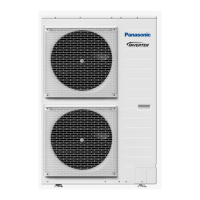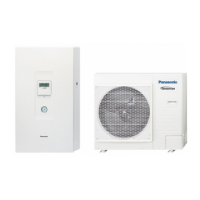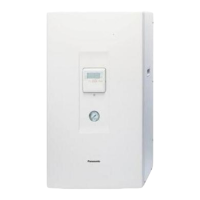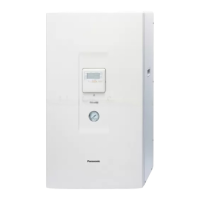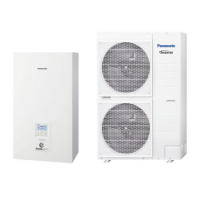3
PRECAUTION FOR USING R32 REFRIGERANT
• The basic installation work procedures are the same as conventional refrigerant (R410A, R22) models.
However, pay careful attention to the following points:
When connecting fl are at indoor side, make sure that the fl are connection is used only once, if torqued up and released, the fl are must be remade. Once
the fl are connection was torqued up correctly and leak test was made, thoroughly clean and dry the surface to remove oil, dirt and grease by following
instructions of silicone sealant. Apply neutral cure (Alkoxy type) & ammonia-free silicone sealant that is non-corrosive to copper & brass to the external of the
fl ared connection to prevent the ingress of moisture on both the gas & liquid sides. (Moisture may cause freezing and premature failure of the connection)
The appliance shall be stored, installed and operated in a well ventilated room with comply to Indoor Floor Area Requirement and without any
continuously operating ignition source. Keep away from open fl ames, any operating gas appliances or any operating electric heater. Else, it may explode
and cause injury or death.
Refer to “PRECAUTION FOR USING R32 REFRIGERANT” in outdoor unit installation manual for other precautions that need to pay attention to.
INDOOR FLOOR AREA REQUIREMENT
• If the total refrigerant charge in the system is <1.84 kg, no additional minimum fl oor area is required.
• If the total refrigerant charge in the system is ≥1.84 kg, additional minimum fl oor area requirements is complied as described below:
Symbol Description Unit
Total refrigerant charge in system,
m
c
(kg)
= Pre-charged refrigerant amount in unit (kg)
+ Additional refrigerant amount after installation (kg)
m
c
Total refrigerant charge in system kg
m
max
Maximum refrigerant charge allowed kg
m
excess
m
c
- m
max
kg
H
Installation height m
VA
min
Minimum ventilation opening area cm
2
A) Determine Maximum refrigerant charge allowed,
m
max
1. Calculate Installation Room Area,
A
room
.
2. Based on Table I, select
m
max
which corresponds to the calculated
A
room
value.
3. If
m
max
>
m
c
, the unit can be installed in the installation room with
the specifi ed installation height in Table I and without additional room area or any additional ventilation.
4. Else, proceed to B) and C).
B) Determine Total Floor Area of
A
room
and
B
room
compliance to
A
min total
1. Calculate the
B
room
area adjacent to the
A
room
.
2. Determine the
A
min total
based on the Total Refrigerant Charge,
m
c
from Table II.
3. The total fl oor area of both
A
room
and
B
room
must exceed
A
min total
.
C) Determine Minimum Venting Opening Area,
VA
min
for natural ventilation
1. From Table III, calculate
m
excess
.
2. Then determine
VA
min
corresponding to the calculated
m
excess
for natural ventilation between
A
room
and
B
room
.
3. The unit can be installed at specifi c room only when the following conditions are fulfi lled:
• Two permanent openings, one at bottom, another at top, for ventilation purposes are made between
A
room
and
B
room
.
•
Bottom opening: - Must comply to the minimum area requirement of
VA
min
.
- Opening must be located d300mm from the fl oor.
- At least 50% of required opening area must be d200mm
from the fl oor.
- The bottom of the opening shall not be higher than the
point of release when the unit is installed and must be
situated d100mm above the fl oor.
- Must be as close as possible to the fl oor and lower than
H
.
•
Top opening: - The total size of the Top opening must be more than
50% of
VA
min
.
- Opening must be located t1500mm above the fl oor.
• The height of the openings must more than 20mm.
• A direct ventilation opening to outside is NOT encouraged for ventilation opening
(the user can block the opening when it is cold).
Adjacent
Room
(
B
room
)
>0.5
VA
min
>
VA
min
>1500mm
>1150mm
Installation
Room
(
A
room
)
Ensure the correct polarity is maintained throughout all wiring. Otherwise, it will cause electrical shock or fi re.
After installation, check the water leakage condition in connection area during test run. If leakage occurs, it will cause damage to other properties.
Installation work.
It may need two or more people to carry out the installation work. The weight of Indoor Unit might cause injury if carried by one person.

